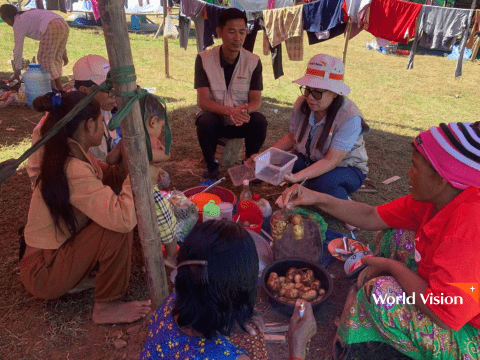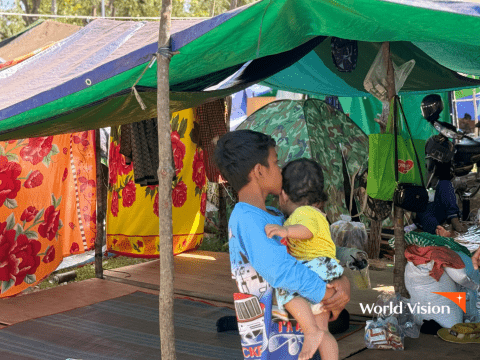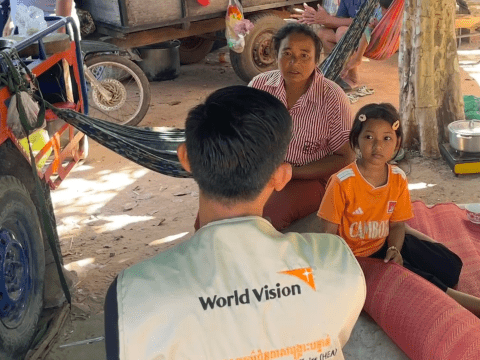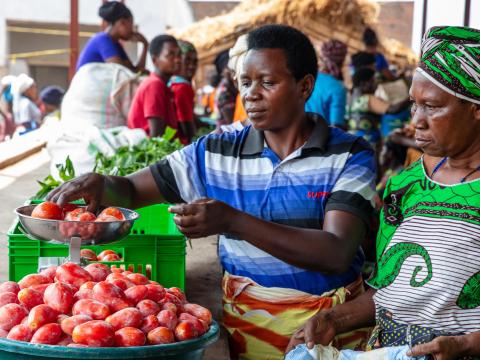
The Fragility Trap: How Ignoring Resilience Leaves Children Behind
Sibonginkosi Mungoni, the Senior Advisor Livelihoods and Economic Recovery in Emergencies, emphasises that resilience must be central to humanitarian programming, especially in fragile contexts where children are most vulnerable. She raises the alarm on long-term recovery being sidelined for short-term relief in the humanitarian reset conversation.
In fragile contexts, where a failed harvest can mean a child goes hungry, drops out of school, is forced into labour or forced marriage, resilience is too often an afterthought in food security and livelihoods programming. It is resilience programmes that make individuals, households and communities more resilient in anticipating, absorbing, adapting to, and recovering from shocks and stresses. But as humanitarian needs surge and funding shrinks, the sector faces a critical question: are we designing for long-term recovery—or merely reacting to risk?
Without resilience, humanitarian interventions, risk being fleeting, reactive and ultimately ineffective, especially in protecting the most vulnerable children who bear the brunt of systemic instability and cyclical shocks that define life in fragile settings.
Resilience: The missing link in humanitarian food security
Currently, fragile states are fast becoming epicentres of extreme poverty, with children disproportionately affected. In contexts where conflict, climate shocks, and displacement are the norm, resilience should be a prerequisite for achieving sustainable impact, rather than an optional consideration. When resilience is embedded in livelihoods and food security programming, it enables families to withstand disruptions without falling deeper into poverty or hunger. It serves as the missing link between emergency aid and sustainable development.
Evidence from programmes like THRIVE, which build secure livelihoods in Africa, Enhancing Nutrition, Stepping Up Resilience and Enterprise (ENSURE) in Zimbabwe and loan recovery models in Myanmar’s earthquake response implemented by VisionFund shows that resilience-building works. These initiatives have helped families withstand droughts, economic shocks and reduce malnutrition. Such programmes enable children to continue learning, growing and thriving amid adversity.
Yet, as part of the humanitarian reset, the humanitarian sector pivots towards rapid relief, with resilience risks being sidelined. Organisations like World Vision, with mandates spanning both humanitarian and development work, are uniquely placed to keep resilience central—embedding it in exit strategies and long-term recovery models.
For donors and implementers, resilience must be a core metric. It demands long-term, flexible funding and adaptive programming—not just short-term fixes. Without it, we risk leaving vulnerable children trapped in cycles of crisis.
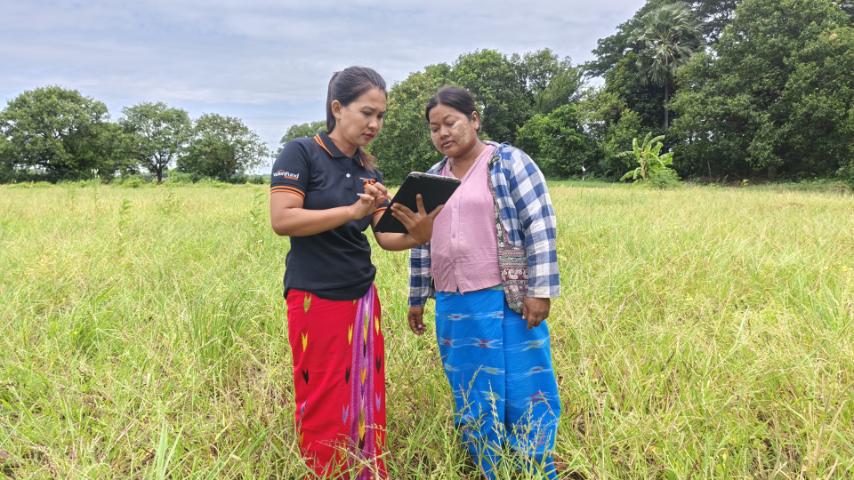
Fragility trap: What happens without resilience?
In the world’s most fragile contexts, children and their families teeter on the edge of survival. One failed harvest, one act of violence, one economic collapse—and the consequences for children are devastating. The repercussions of the absence of resilience-oriented programming can be immediate and severe for children:
- Hunger prevails
When livelihoods vanish and food systems falter, children suffer the most. Malnutrition surges, impacting their physical and cognitive development. Without resilience—be it climate-smart agriculture, diversified income sources, or social protection mechanisms—families are left defenseless against hunger. - Education becomes a casualty
In a crisis, families are forced to make impossible choices. Education becomes a luxury, not a right. Children are pulled from classrooms to work, migrate, or care for siblings. The cycle of poverty tightens its grip, stealing their future before they begin. - Exposure to protection risks
Economic instability and displacement increase children's exposure to exploitation, child labour, early marriage and recruitment into armed groups. Resilience programming that strengthens household income and community safety nets can reduce these risks. - Psychological and emotional stress
Children often experience trauma from repeated shocks—conflict, hunger, loss. Without stable livelihoods and food security, families cannot provide the emotional and psychological support children need. Resilience includes psychosocial support and community cohesion, which are vital for healing and hope.
The nexus imperative: why integration matters?
Today, more than ever, humanitarian, development and peacebuilding efforts must not operate in silos. Resilience is the thread that weaves these efforts together—transforming emergency aid into sustainable systems and short-term relief into long-term recovery. It transforms emergency food aid into sustainable food systems, temporary cash assistance into long-term financial inclusion, and short-term training into lasting economic empowerment.
- Livelihoods + Resilience = Stability - Resilient livelihoods mean families can earn income even during crises. This includes vocational training, access to markets, financial literacy and support for small businesses. When these are designed with resilience in mind, they help families plan for their future, not just survive the present.
- Food Security + Resilience = Nutrition and Dignity - Resilient food systems prioritise local production, climate adaptation and community-based solutions. They reduce dependency on external aid and empower families to feed their children with dignity.
- Peacebuilding + Resilience = Hope - In fragile contexts, resilience contributes to peace by reducing competition over resources, strengthening social cohesion and building trust in institutions. Children who grow up in resilient communities are more likely to become agents of peace themselves.
In recent resilience-focused programming across fragile regions, families and children consistently highlight the difference it makes. For example, in the drought-stricken village of Pitseng, Lesotho, a small vegetable farmer, 59-year-old Mamapiloko, turned drought-related hardship into hope through climate-smart farming, taught by her daughter, Mone. Their keyhole garden and fuel-saving stove now sustain the family year-round—proof that local knowledge and resilience can drive climate adaptation.
Stories of people like Mamapiloko are not merely anecdotes but evidence of the impact that resilience programming has, especially in fragile contexts.
What needs to change: Key shifts to protect children and strengthen families in fragile contexts
To build lasting resilience and reduce humanitarian need, donor support should prioritise the following:
- Integrate resilience across programming
Ensure all livelihoods and food security interventions include risk analysis, adaptive planning, and sustainability measures. - Invest in data and evidence
Support the development and use of tools to measure resilience outcomes for children and families, guiding adaptive programming. - Strengthen local systems
Invest in community-based organisations, local governments, and indigenous knowledge systems to drive locally led resilience. - Apply child-centred approaches
Design programmes that address children’s specific needs—nutrition, education, protection, and psychosocial support. - Promote cross-sector collaboration
Encourage integrated approaches across food security, health, education, protection and livelihoods sectors. - Align policy and financing
Advocate for donor alignment on resilience metrics and multi-year, flexible financing models. - Support systems strengthening
Fund local institutions, supply chains and social protection systems that sustain resilience over time. - Localise the response
Partner with local CSOs and governments to co-create solutions and ensure ownership and sustainability. - Measure what matters
Use proven tools like RIMA-II and household scorecards to track resilience outcomes and inform decisions. - Design for risk, not just recovery
Incorporate scenario planning, contingency budgeting and adaptive design to prepare for future shocks.
Resilience at the core: Calling for a new era for child-focused humanitarian action
As humanitarian needs intensify and the sector recalibrates its priorities, the call is clear: we must commit to integrating resilience not as an add-on, but at the core of child-focused humanitarian action. Let us recognise that without resilience, our efforts may provide temporary relief but fail to create lasting change.
It’s time to shift resilience from the margins to the mainstream. For children in fragile contexts, resilience means the difference between mere survival and the chance to thrive. It offers a future where hope becomes a daily reality, not a distant dream.
About the Author:
Sibonginkosi Mungoni is a Senior Advisor for Livelihoods and Economic Recovery in Emergencies at World Vision International. She has over 20 years of experience in humanitarian and development work across Africa, the Middle East and global platforms. Currently, she leads strategy and innovation in resilience, food security, and climate adaptation, particularly in fragile contexts and large-scale emergencies. She provides technical leadership for integrated livelihood programming to humanitarian responses. As a thought leader in disaster risk reduction and inclusive economic recovery, Sibonginkosi actively shapes global policy through forums like the Global Food Security Cluster. She holds advanced degrees in humanitarian aid and biological sciences.
